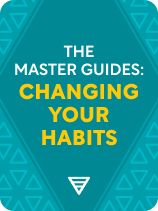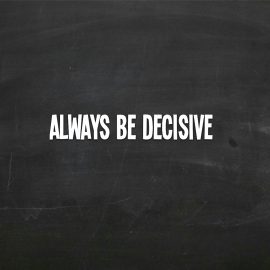

This article is an excerpt from the Shortform book guide to "The Master Guides: Changing Your Habits" by Shortform. Shortform has the world's best summaries and analyses of books you should be reading.
Like this article? Sign up for a free trial here.
What is habit stacking? How can you use a current habit to build a better and healthier one?
According to James Clear, a great way to get used to a new habit is “stacking” it on top of another. This means adding a new behavior onto another to continue the habit routine.
Below we’ll look at how habit stacking works, beginning with the cues and cravings that make it possible.
The Cue
What is habit stacking and how does it start? To understand the concept of habit stacking, you first need to understand how cues and cravings play into it. The cue is what starts the automatic program running in your brain. Cues are also called “prompts” or “triggers.” They can be either external (something in your environment) or internal (your thoughts or emotions). For example, say you have a habit of drinking coffee in the morning. This habit might have an external cue, such as the smell of coffee from other coffee drinkers in the office. Or it might have an internal cue, such as feeling drowsy in the morning.
The Craving
The craving is a powerful urge to execute the routine in anticipation of the reward. Some authors, such as Clear, list this as an essential component of habits. They argue that the cue triggers the craving, which in turn causes you to execute the routine. Others, such as Oakley, leave out the craving step, stating that you perform the routine automatically in response to the cue.
Let’s return to our example of a coffee-drinking habit and assume it’s the smell of coffee that constitutes the cue. Any time you smell coffee, you’ll start to crave coffee, and the craving will continue even if you consciously decide not to get any coffee today.
Clear’s Habit Stacking Method
To make a cue for a new habit harder to miss, try using an existing habit as the cue for another behavior. He calls this “habit stacking.” For example, maybe you already have a habit of going outside in the morning to water your flower garden, and you want to get into the habit of jogging every morning. So you use finishing your watering as a cue to go for a run.
Similarly, you can capitalize on your existing cravings by inserting other desirable habits in front of them. For example, maybe you already have a habit of drinking hot chocolate in the morning, after you come back inside from watering your flower garden. So you insert your morning run between watering your garden and drinking hot chocolate. Eventually, this sequence becomes ingrained to the point that your craving for hot chocolate makes you want to go for a run so that you can come back and drink hot chocolate.
Interestingly, while Clear doesn’t mention Fogg’s Behavior Model, he does assert that one of the keys to successfully changing your habits is to make the change as easy as possible. He recommends breaking down new habit routines into small steps that take no more than two minutes each. Then, start your new habit with just the first two-minute step of the process, and build up the rest of it later. This advice closely parallels Fogg’s ability-based approach to changing habits.
That said, where Fogg emphasizes minimizing difficulty so you don’t have to depend on your ever-fluctuating level of motivation, Clear emphasizes the importance of keeping a positive attitude in addition to making your behavioral changes as easy as possible. In particular, Clear advises you to view performing a new habit as an opportunity, not an obligation, and to find ways that the changes reflect your identity, making them more meaningful. He says these techniques can make a big difference in your level of motivation, and thus, in your success rate at cultivating positive new habits.
For example, if you think, “I have to jog every morning so that I don’t gain weight,” you’ll end up associating jogging with the risk of gaining weight, which you probably have negative feelings about. But if you think, “I’m a healthy person and I have the opportunity to keep my body tuned up by jogging regularly,” you’ll probably feel a lot more positive about jogging.

———End of Preview———
Like what you just read? Read the rest of the world's best book summary and analysis of Shortform's "The Master Guides: Changing Your Habits" at Shortform.
Here's what you'll find in our full The Master Guides: Changing Your Habits summary:
- How even the smallest habit improvements can have a big impact on your life
- Advice from the top five best-selling authors on changing your habits
- How to identify the behaviors that keep you stuck in the same patterns






